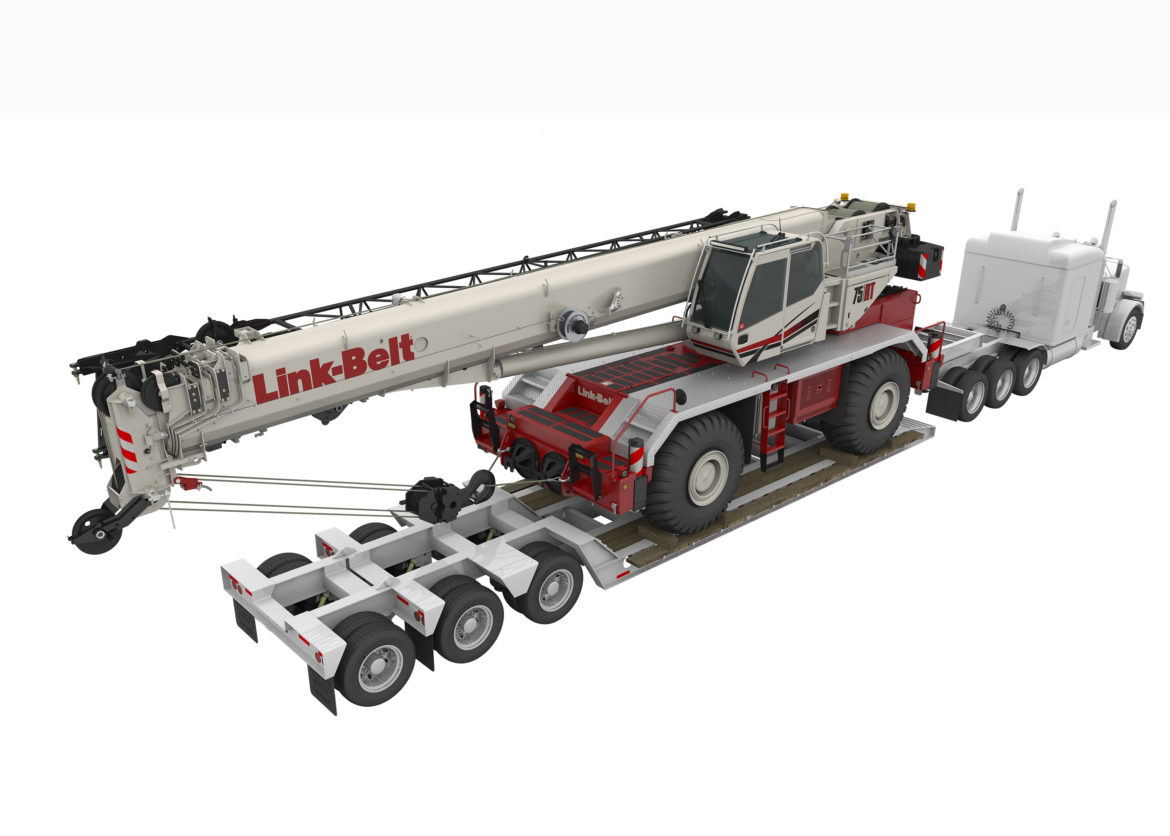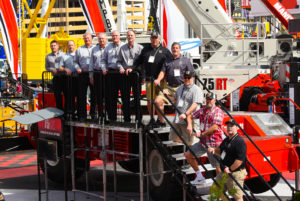At ConExpo-Con/Agg 2017, Link-Belt Cranes publicly introduced the second product in the next-generation rough-terrain crane series, the 75-ton 75RT. Although the crane includes many of the same features as the larger 110RT, the Link-Belt 75RT also has unique qualities that it calls its own.
Link-Belt’s new operator cab was first incorporated on the 75RT. Its design updates include a front window with 20% more visibility and windshield wipers that go to the top, a more comfortable operator’s seat, improved interior lighting, and a 20° tilt. Other cab features include a USB port and a 12-volt power supply.
A key feature in the cab is the new Link-Belt Pulse 2.0 RCL control system, which includes a simple interface with a 10-in. display—a 47% larger screen than the original Pulse—and programmable features that allow each operator to customize the display. The resistive touchscreen can be used with gloves and be seen in direct sunlight. Link-Belt Pulse 2.0 also allows for self-diagnosis of the crane. It includes a Wi-Fi hub and can be updated remotely.
The 75RT is also the first Link-Belt crane model to incorporate the variable confined area lifting capacities, or V-CALC. The new feature provides more selectable outrigger configurations. Charts for the increased number of outrigger configurations are built into Link-Belt Pulse 2.0. Once outriggers are set, the system provides an outrigger configuration that gives the operator different capacity previews on the display. Colored pie charts on the screen represent workable areas and also indicate a percentage of the crane’s available capacity. Besides highlighting available working capacities, the system previews the next five radii for that given boom angle. Upon selection, Link-Belt Pulse 2.0 will provide a live view of the work area.
Providing a rough-terrain crane that is easy to operate and service was crucial for Link-Belt during the 75RT’s development. Routine checks on powertrain components and fluid levels can be made through large swing-out doors, and fuses, relays, and breakers are in a centralized location. A centralized pressure check and grease bank located near the cab allows an operator to monitor multiple pressure and fluid workings from one location.
Link-Belt 75RT also offers Eco Mode. With this feature, the RT’s 270-hp Cummins Tier 4F QSB 6.7 diesel engine will automatically drop down to 700 RPM If the crane is idle for more than 15 seconds. When the operator is ready to work again, any control will bring the crane back up to the RPMs the engine was previously at automatically. The function can be turned off, if desired.
The 75RT has a five-section, 142-foot, full-power boom. With the available 35- to 58-foot two-piece and 10-, 35-, and 58-foot three-piece bi-folding fly jib, the maximum tip height reaches 208.7 feet.
With transportability in mind during its design, the 75RT has an overall height of 12’2”, and it can be loaded with every option available and still transport under 100,000 pounds. If the crane needs to be less than 90,000 pounds for transport, that can be achieved by removing a single-slab, 14,500-pound counterweight.
Looking for an RT crane? Find dozens of Link-Belt rough-terrain cranes on CraneNetwork.com.
Initial Uses
NessCampbell Crane + Rigging was the first company to receive the Link-Belt 75RT rough-terrain crane. The company reported the crane immediately went on a year-long job dismantling tool beds in Everett, Wash.
In the video below, watch as a Link-Belt 75RT is being operated during a steel plant shutdown in Columbia City, Ind. During the shutdown, the crane was used to remove and replace a steel chute.


